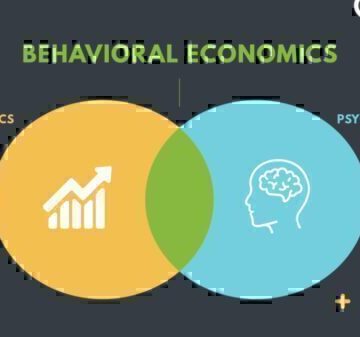401k and 403b are retirement savings plans offered by employers so their employees can save and invest for retirement while receiving some tax advantages along the way.
Participating in a 401k or 403b plan can play a crucial role in securing a financially stable retirement.
By taking advantage of employer contributions (if offered with your plan), tax benefits, and long-term investment growth, individuals can build a financial foundation for their retirement years.
Read on to understand the basics, then be sure to contact your employer or a financial advisor for the specifics of your situation.
Are you thinking about your financial future? Planning for retirement might seem like a distant goal, but it’s never too early to start considering your options.
Understanding the fundamentals about 401k and 403b retirement plans can help you get a better grasp on what they entail and how they can benefit you in the long run.
What are 401k and 403b Retirement Plans?
Let’s start with the basics. Both the 401k and 403b are retirement savings plans that are offered by employers to their employees.
401k plans are typically offered by for-profit companies, while 403b plans are offered by certain nonprofit organizations, schools, and other tax-exempt entities. They are designed to help individuals save and invest for their retirement while offering some tax advantages along the way.
Employee-sponsored 401k and 403b retirement plans allow employees to deduct money from their paychecks, deposit it in a retirement account and earn interest tax-deferred.
Tax-deferred means this saved income is not taxable until you withdraw the funds.
How 401k and 403b Retirement Plans Work
You decide how much money you want deducted from your paycheck and deposited to the plan based on limits imposed by plan provisions and IRS rules.
Your employer may also choose to make contributions to the plan.
These plans enable employees to choose various investment accounts including mutual funds, stocks, bonds and money market accounts. 401k plans are offered by for-profit companies, and 403b plans are offered by non-profit companies.
It is your responsibility to decide if you want to participate in the plan and, if so, how much you will contribute each pay period.
Note that 401k and 403b plans often facilitate automatic payroll deductions, making it easy for individuals to contribute regularly without actively managing their contributions. This automated process encourages consistent savings without the need for constant manual intervention.
Ask your employer about the specifics of your plan, especially when it comes to contribution limits since both plans have annual contribution limits set by the IRS. It’s important to know these limits and try to contribute as much as you can, especially if your employer offers matching contributions.
This simple example can help understand how these plans work. If you earn $1,000 each pay period and elect to defer 5 percent of your pay, $50 will be taken out of your pay and placed in the retirement plan. These contributions are deducted from your salary on a pre-tax basis. This means that by contributing to a 401k or 403b, you actually reduce your taxable income. For example, instead of being taxed on the full $1,000 per pay period, you are only taxed on $950. You don’t owe income taxes on the money contributed until you withdraw it from the plan.
Withdrawing from Employee-Sponsored Retirement Plans
As noted, both 401k and 403b plans offer tax-deferred growth, meaning you won’t pay taxes on your contributions or earnings until you start making withdrawals during retirement. This can be a significant advantage in building your retirement nest egg over time.
The IRS allows penalty-free withdrawals from retirement accounts after age 59½ and requires withdrawals after age 72. (These are called required minimum distributions, or RMDs). There are some exceptions to these rules for 401k plans and other qualified plans.
An employee will pay income taxes and possibly an early withdrawal penalty if they withdraw their money from the plan before the required dates.
Your benefits administrator will have your specific information. Familiarizing yourself with rules can help you avoid unnecessary fees and taxes.
Why It Pays to Participate in Your 401k or 403b
Employer-sponsored retirement plans are your best ally in reaching your retirement goals. The sooner you start contributing, the better off you are going to be in retirement. Even just one or two percent will make a big difference over time.
You’ll get ahead faster if your employer offers matching contributions for employee contributions to 401k and 403b plans. This essentially means that the employer will contribute a certain percentage of the employee’s salary to the retirement account, effectively adding free money to the employee’s savings.
There are also the tax benefits to consider. As noted in the example above, contributions to 401k and 403b plans are typically made on a pre-tax basis, meaning they are deducted from the employee’s salary before taxes are applied. This can lead to an immediate reduction in taxable income, potentially resulting in lower annual taxes.
Both 401k and 403b plans allow individuals to invest their contributions in various investment options, such as stocks, bonds, and mutual funds. Over time, these investments can grow significantly due to compounding interest, helping individuals build a substantial retirement nest egg.
Regular participation in these retirement plans, which can be automated for ease of saving, can ensure that individuals are actively saving for their retirement. These plans provide a structured and disciplined approach to retirement savings, allowing individuals to accumulate sufficient funds to maintain their standard of living after they stop working.
A Retirement Plan is Not for Emergencies
Money placed in a 401k or 403b is not intended to fund an emergency. While some plans allow loans and hardship withdrawals, the rules governing them are restrictive. Usually, early withdrawals result in heavy penalty fees. Be sure to understand the rules of your employer-sponsored plan.
Withdrawing funds from retirement accounts before reaching the eligible age can lead to significant tax implications and early withdrawal penalties. These penalties can eat into a significant portion of your savings, reducing the overall amount you receive and potentially leaving you with less money than you initially withdrew.
To avoid the need to dip into retirement savings during emergencies, it’s advisable to establish a separate emergency fund. Building an emergency fund that covers at least three to six months’ worth of living expenses can provide a financial safety net during unexpected events, preventing the need to tap into your retirement funds. It’s crucial to prioritize and maintain this emergency fund as a separate entity from your retirement savings.
Transform your finances with GreenPath’s expert support. Take charge of your money starting now.
800-550-1961877-337-3399Understand Your Employer’s Plan
Your employer has the details of your specific plan. It contains lots of good information on how your plan works, what options are available, who the trustees are and other important information. Read all the material your employer provides on the plan.
Note that there will be specifics that impact your plan. The information provided here is useful for general guidance.
You Have Options if You Leave Your Employer
Leaving an employer doesn’t mean you have to leave your 401K behind. Explore your options and choose the one that aligns best with your financial objectives and future retirement plans.
As an introduction to your options, these are a few choices that might make sense for you:
- Leave It with the Employer: Some employers allow you to leave your 401k or 403b savings in their plan even after you’ve left the company. This option might be suitable if you are satisfied with the investment options and the plan’s performance. However, if you have multiple 401k or 403b accounts from different employers, it might become challenging to manage them all effectively.
- Roll Over to a New Employer’s Plan: If you’re starting a new job that offers a 401k or 403b plan, you can roll over the funds from your previous plan into your new employer’s plan. This can streamline your retirement savings and make it easier to manage your investments in one place.
- Roll Over to an Individual Retirement Account (IRA): You also have the option to roll over your 401k or 403b funds into an IRA. This provides you with more investment options and greater control over your retirement savings. Additionally, an IRA can offer more flexibility and potentially lower fees.
- Cash Out: While this is an option, it’s generally not recommended. Cashing out your 401k before retirement can result in significant tax implications, including early withdrawal penalties. This can diminish your retirement savings and hinder your long-term financial goals. Be sure to fully understand your specific situation.
It’s essential to carefully consider your options and consult with a financial advisor before making any decisions. Each option has its advantages and disadvantages, depending on your individual financial situation and long-term goals. Make sure to assess the fees, investment options, and any potential tax implications associated with each choice.
Stay Informed
This information is intended to get you up to speed on the basics. Start with your employer’s HR department to understand your specific options.
The material shared here is for general guidance only. Planning for your retirement is a journey, and it’s essential to stay informed and regularly review your retirement plan to ensure it aligns with your financial goals.
Consulting with a financial advisor can also provide you with personalized guidance tailored to your specific situation.
You can learn more at this website provided by investor.org for further information.
GreenPath Financial Service
GreenPath, A Financial Resource
If you’re interested in building healthy financial habits, paying down debt, or saving for what matters most, take a look at these free financial tools.










